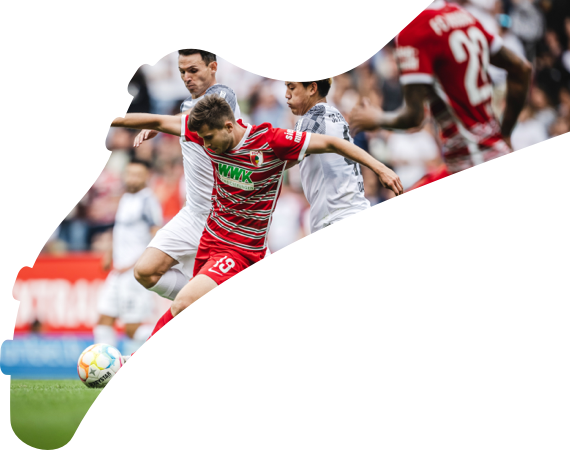
Where will Erling Haaland fit in at Borussia Dortmund?
With the arrival of teenage wonderkid Erling Haaland at the Signal Iduna Park, Borussia Dortmund’s already potent front line has just gained even more cutting edge. But, with such talent at Lucien Favre’s disposal, how will the Swiss tactician deploy his Norwegian starlet?
bundesliga.com looks at where 19-year-old Haaland is most likely to fit into Dortmund’s plans and the added tactical option his signing brings.
Option 1: 3-4-3
Favre first shifted to 3-4-3 from his favoured 4-2-3-1 formation for the Matchday 13 trip to Hertha Berlin that brought about a much-needed 2-1 victory. The 62-year-old has stuck with the tactic ever since, with the five matches after said tweak bringing about convincing wins over Fortuna Düsseldorf (5-0) and Mainz (4-0), as well as the thrilling 3-3 draw with table-toppers RB Leipzig.
Dortmund have lost just once in this sequence - the late 2-1 defeat to Hoffenheim on Matchday 17 - and considering how it has aided their return to the free-flowing football that has been a hallmark of Favre’s tenure, it is hard to see them shifting away from it anytime soon.
Watch: Erling Haaland's arrival at Borussia Dortmund

The defence has a familiar look to it in the shape of well established No1 Roman Bürki but has seen a departure from the more accustomed back four, with Mats Hummels flanked by Manuel Akanji and Dan-Axel Zagadou to form a three-man defence. Achraf Hakimi and Raphael Guerreiro add further width in the wing-back berths - with Nico Schulz and Lukasz Piszczek providing fine competition - and Julian Brandt joins Alex Witsel to make up an art-meets-industry central midfield.
The fluidity required of the attacking trio will demand a lot of the techniques of its protagonists and while Haaland’s 6'4" frame highlights his physicality, it certainly does not define his game. The Norway international has only recently gone through the ‘filling out’ stage of his physical development and Haaland is deceptively good with his feet, having had to initially find his way in the game by virtue of brains rather than brawn. He has a fine first touch as well as both the skill and awareness for intricate link-up play that would allow Haaland, Marco Reus and Jadon Sancho to move freely across the front line.
Captain Reus has largely occupied the central position that Haaland is expected to start from but the Germany international can comfortably move out to the left flank in order to add yet more quality to the former RB Salzburg’s supply chain. It means Dortmund’s joint top-scorers (both Reus and Sancho have nine league goals so far) will dovetail their new teammate in what is a frightening-looking forward line that can interchange at will.
Should Reus take up position out wide, it will be Thorgan Hazard that most likely makes way but the Belgian’s role - like that of Mario Götze and Paco Alcacer - will still be highly important in providing not only real quality competition for places, but also world-class options from the bench.
Option 2: 4-2-3-1
Haaland’s arrival means that if Favre were to revert to type and move back to 4-2-3-1, his side is still well set up to add even greater potency going forward. The main change at the back would see Zagadou move to the bench to form an otherwise unchanged defensive line that becomes a more accustomed four ahead of Bürki, while the Brandt-Witsel pairing needs no adjustment in midfield.
Ahead of them, however, could see Hazard remain on the left, Reus move inside to his preferred central starting position and Sancho on the right. This would allow Reus the freedom he relishes to roam the pitch and play off Haaland. Considering both players’ abundance of pace and defender-escaping movement off the ball, their working in tandem through the middle would be a nightmare for opposition defenders to keep tabs on as they drift in and beyond defensive lines.
With Haaland taking up his preferred central role, he also provides a real focal point for the likes of master suppliers Guerreiro, Hakimi, Sancho and Hazard to aim for from out wide. His newfound physicality, paired with his ability in the air and lethal finishing are a superb target for his teammates to pick out. Indeed, Sancho (nine) and Hazard (seven) are second and third, respectively, on the league’s list of 2019/20 top assist makers and they will relish finding a man who has already racked up 28 goals from 22 appearances in all competitions this season prior to joining Dortmund.
However Favre decides to unleash his new striker, Dortmund now have a gilt-edged, footballing prodigy of a frontman thrown into an attack whose 41 goals have so far only been outgunned by Bayern Munich (46) and RB Leipzig (48). And Haaland may well prove the missing piece of the jigsaw that puts together Dortmund’s first league triumph in eight years come the end of the campaign.
Related news

How does Leverkusen's undefeated run compare?
Bundesliga champions Bayer Leverkusen have gone 44 games undefeated across all competitions, but do they have the league record? And what other teams have come close?

Leverkusen break Juventus' unbeaten record
The Bundesliga champions' 44-match streak is a first among teams across Europe's top five leagues.

Matchday 30 probable teams
How much rotation will we see from newly crowned champions Leverkusen as they bid to remain unbeaten away at top-four chasing Dortmund?


